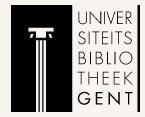Martyrdom in the Mamluk Egypt in the Early Bahri Period (1252-1299)
DOI:
https://doi.org/10.61671/hos.8.2025.9083Keywords:
Mamluks, Bahri period, martyrdom, shahid, EgyptAbstract
Martyrdom for the faith (‘‘istishhādiyya(t)’) is one of the most important concepts in Islam, which got a detailed theological discussion in the Middle Ages and continues to be of high significance in the present period. However, its meaning was a subject to changes depending on a historical period and geographical area.
The paper argues that the institution of martyrdom was simplified as much as possible in the early Bahri period (the second half of the 13th century). Moreover, it has become an element in the process of glorification and legitimization of the reign of the sultan al-Mansur Qalawun [1279-1290] in many aspects regardless the actual contribution of a proclaimed ‘shahid’. Thus, this gap between the considerations of the ruling elite and views of the Islamic circles on martyrdom was deepened. For example, For the attribution of a Mamluk amir, it was preferable that he demonstrate his loyalty to the sultan and even more preferable that he be from among the amirs of the sultan al-Mansur Qalawun.




































